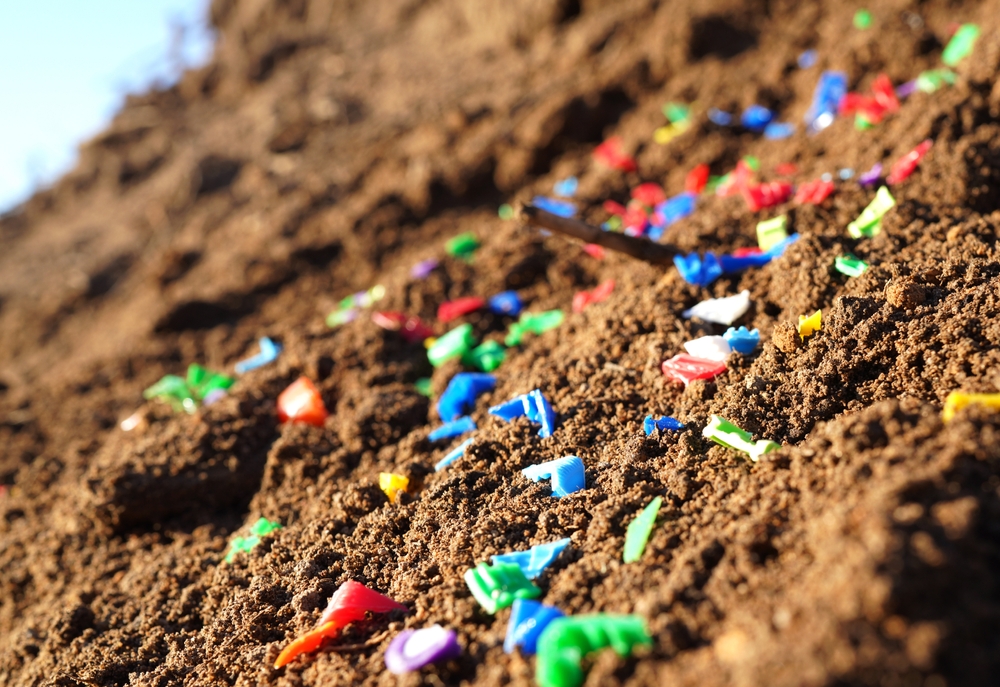In recent years, biodegradable plastics have been considered a potential alternative to traditional plastics. However, researchers remain uncertain about the difference in impact on the agricultural sector and whether it is more beneficial than traditional plastics.
The team of researchers investigated these questions by examining two types of microplastics: traditional microplastics, polypropylene (PP) and polyechen (PE) and biodegradable microplastics, polycaprolactone (PCL) and polybutylene adipate terephthalic acid (PBAT).
A team led by Dr. Tidag from New Jiang University and Nimbo University selected peas as the experimental crop. This crop adds plastic to the soil at doses of 0%, 0.1% and 1%.
Researchers observed the growth status of peas at three important growth stages: seedlings, flowering and maturation, analysing changes in soil nutrients, microbial activity and community.
Agriculture has a growing number of plastic pollution.
Plastic pollution has become a globally recognized environmental problem, and agriculture has increasingly functioned as an important microplastic reservoir due to the widespread use of plastic films.
These small plastic fragments can alter soil structure, destroy microbial activity, interfere with plant nutrient absorption, and thus threaten the health of agricultural ecosystems.
Biodegradable microplastics show many more benefits for soil health
Experimental results showed significant differences in pea growth in the effects of different types and doses of microplastics.
In particular, biodegradable microplastic PBAT exhibited a specific advantage at the seedling stage, as soils with 0.1% PBAT showed a 35.3% increase in root biomass compared to the control group. This may be related to the ability of PBAT to stimulate microbial growth, allowing roots to “mine” more available nutrients.
In contrast, the effects of traditional microplastic PP and PE on the ground parts of pea were more complicated. Seedlings treated with 1% PP had a 43.4% decrease in ground biomass, while 0.1% PP led to a 126.1% increase in biomass during the flowering stage.
Similarly, treatment with 0.1% and 1% PE increased the 88.0% and 68.7% increase in ground biomass during flowering, respectively.
These differences may be attributed to the physical properties of traditional microplastics and their impact on soil structure.
Potential impact on ecological function
From a soil ecology perspective, biodegradable microplastics as degradable carbon sources can increase the carbon, nitrogen and phosphorus content within soil microorganisms, promoting the degradation and nutrient cycling of organic matter.
Traditional microplastics, which are more difficult to degrade, provide additional habitat for microorganisms through soil aggregation, but their effects on microbial biomass are not stable.
Furthermore, all microplastic treatments increased the complexity of the bacterial and fungal networks without significantly altering material exchange between microorganisms. However, this could potentially affect ecological functioning.
This study found that when microorganisms use up the easily decomposed carbon of microplastics, fresh carbon secreted by pea roots is insufficient to alleviate microorganisms’ “carbon starvation.”
At this point, peas and microorganisms will compete for limited nitrogen and phosphorus resources in the soil.
Long-term research necessary to determine the true effect of microplastics on agriculture
The experiment revealed the short-term effects of different microplastics on the PEA-SOIL system, but the researchers emphasized that due to the shorter experimental period, the long-term toxicity of microplastics has not yet been fully manifested.
Future research includes long-term field experiments focusing on legume crops that rely specifically on biological nitrogen fixation, and further assess the potential risks of microplastics to agroecosystems.
Source link

